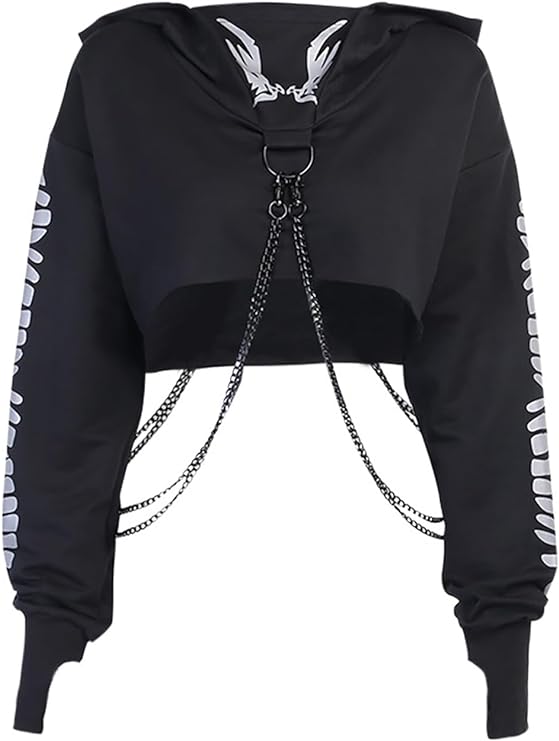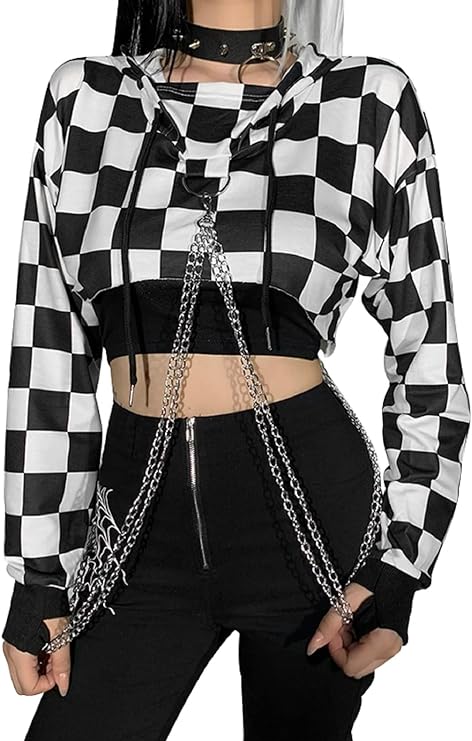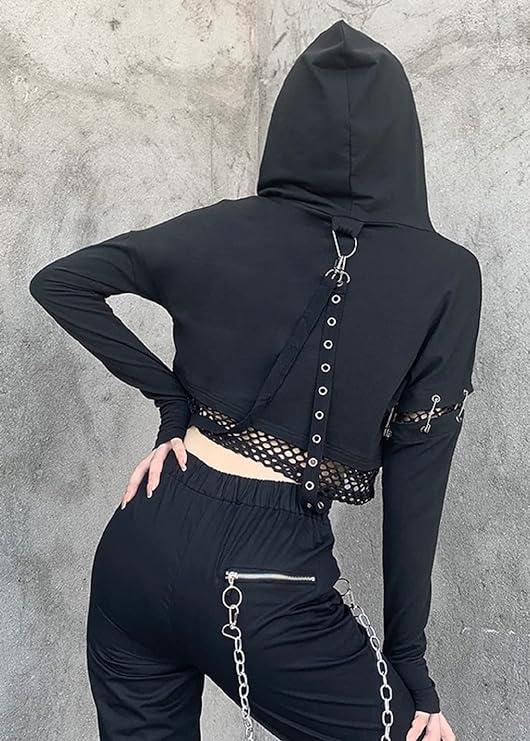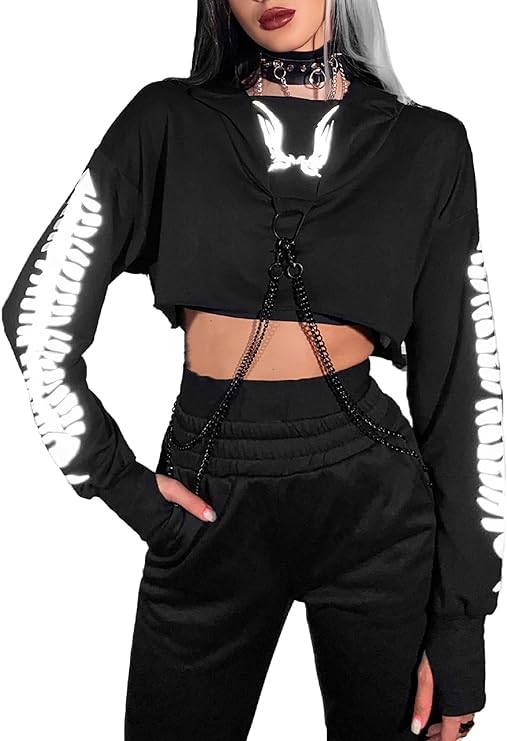Goth clothing represents a subculture-inspired fashion style that embraces dark aesthetics, uniqueness, and self-expression. In this article, we will delve into the world of goth clothing, exploring its origins, defining characteristics, the evolution of style, its significance as a form of self-expression, popular goth fashion trends, and tips for incorporating goth elements into everyday attire.

I. Origins and Influences of Goth Clothing
1.1 From Music to Fashion
Goth clothing emerged as a part of the goth subculture, which originated in the late 1970s and early 1980s as an offshoot of the punk movement. Influenced by post-punk, gothic rock, and darkwave music genres, the goth subculture gave rise to a distinct fashion aesthetic that became synonymous with its followers.
1.2 Symbolism and Dark Aesthetics
Goth clothing is characterized by its dark aesthetics, drawing inspiration from elements such as Victorian and Edwardian fashion, horror films, and Gothic literature. The color palette often consists of black, deep purples, dark reds, and other deep and rich tones, reflecting a sense of mystique and elegance. Symbolism plays an essential role in goth fashion, with motifs like skulls, crosses, bats, and occult imagery frequently incorporated into clothing designs.

II. The Evolution of Goth Style
2.1 Traditional Goth Fashion
Traditional goth fashion embodies a more historical and romantic aesthetic, drawing inspiration from Victorian and Edwardian era clothing. It includes elements such as lace, corsets, velvet, ruffles, and intricate details. Silhouettes are often dramatic, with long coats, flowing gowns, and elaborate accessories.
2.2 Modern and Alternative Goth Styles
In recent years, goth fashion has evolved to incorporate various alternative and modern elements. Alternative goth styles may include influences from cybergoth, industrial, steampunk, and nu-goth fashion. These styles experiment with bold shapes, futuristic elements, and a combination of different subculture aesthetics.

III. The Significance of Goth Clothing as a Form of Self-expression
3.1 Embracing Individuality and Nonconformity
Therefore, Goth clothing serves as a powerful form of self-expression, allowing individuals to embrace their unique identities and break free from societal norms and expectations. By adopting goth fashion, individuals can explore different aspects of their personality and express themselves authentically, transcending mainstream fashion trends.
3.2 Expressing Emotions and Alternative Ideals
Goth fashion provides a platform for individuals to express deeper emotions and explore alternative ideals. Through their clothing choices, goth enthusiasts can convey a wide range of emotions, from melancholy and introspection to resistance and rebellion. It allows them to challenge traditional notions of beauty and fashion and create their own alternative aesthetics.

IV. Popular Goth Fashion Trends
4.1 Victorian and Romantic Goth:
Victorian and romantic goth styles pay homage to the aesthetics of the Victorian and Edwardian eras, combining elements of historical fashion with a dark and gothic twist. This style embraces intricate lace, structured corsets, high collars, and flowing skirts or dresses. The focus is on creating an elegant and ethereal look, reminiscent of Gothic novels and period dramas. Layers of lace, ruffles, and velvet are often incorporated into outfits, adding depth and texture. Accessories like cameo brooches, parasols, and delicate gloves complete the Victorian goth look, evoking a sense of mystery and sophistication.
The romantic goth style, on the other hand, emphasizes softer and more whimsical elements while retaining gothic undertones. It blends feminine and delicate touches with dark elements such as dark florals, sheer fabrics, and flowing silhouettes. Dresses with poetic sleeves, ethereal patterns, and pastel gothic prints create a mesmerizing and dreamy aesthetic. Accessories like lace gloves, vintage-inspired jewelry, and floral crowns enhance the romantic goth look, adding a touch of nature and fantasy.
4.2 Cybergoth and Industrial Goth:
Cybergoth and industrial goth styles emerged in the late 1990s and early 2000s, showcasing a fusion of gothic elements with futuristic and industrial influences. These styles embrace bold colors, neon accents, alternative materials like PVC and latex, and accessories that exude a cyberpunk vibe. Platform boots with chunky soles, goggles, gas masks, and leather harnesses are common in cybergoth and industrial goth fashion.
The use of unconventional textiles such as PVC, vinyl, and metal chains adds to the edginess of these styles. Industrial goth often incorporates more muted tones like metallic greys, blacks, and muted earthy shades, while cybergoth embraces neon colors like fluorescent green, electric blue, and vibrant purple. These styles create a visually striking and avant-garde look, with a focus on alternative fashion and incorporating elements of the underground and alternative music scenes.
Both Victorian and romantic goth, as well as cybergoth and industrial goth, demonstrate the breadth and versatility of goth fashion. From classic elegance to futuristic and edgy aesthetics, these styles provide individuals with the freedom to express their individuality and creativity within the realm of goth fashion.

V. Incorporating Goth Elements into Everyday Attire
5.1 Mixing Subculture Aesthetics
Moreover, Incorporating goth elements into everyday attire can be as simple as combining different subculture aesthetics. Mixing elements of goth, punk, or alternative styles allows individuals to create unique and personalized ensembles that reflect their own style and taste.
5.2 Accessorizing and Layering
Moreover, Accessories play a crucial role in adding goth elements to everyday outfits. Incorporating statement pieces like chokers, oversized rings, and spike bracelets can instantly elevate a look. Layering different garments, such as pairing a leather jacket with a lace top or a corset belt with a flowing dress, adds depth and texture to the outfit.
VI. Embracing Individuality through Goth Clothing
6.1 Unleashing Creativity and Confidence
Moreover, embracing goth fashion not only allows individuals to express their unique identities but also provides them with the opportunity to unleash their creativity and experiment with different styles. By stepping outside of societal norms and embracing goth clothing. Individuals can break free from the fear of judgment and fully express themselves authentically. This sense of freedom fosters a strong sense of confidence and empowerment. As individuals no longer feel bound by the constraints of mainstream fashion trends.
6.2 Breaking Boundaries and Inspiring Others
By embracing goth fashion, individuals not only express themselves but also inspire others to embrace their own style and break free from societal norms. Goth clothing encourages a sense of community, as like-minded individuals come together and celebrate their shared love for dark aesthetics, fashion, and individuality.
In conclusion, goth clothing represents a subculture-inspired fashion style that embraces dark aesthetics, uniqueness, and self-expression. It has evolved over time, incorporating both traditional and alternative elements. Goth fashion holds a significant place in the realm of self-expression, allowing individuals to break free from mainstream trends and celebrate their individuality. Finally, By incorporating goth elements into everyday attire, individuals can create unique and striking looks that reflect their personal style and make a statement. Goth clothing cultivates a sense of community and inspires others to embrace their own unique style and celebrate their individuality.
